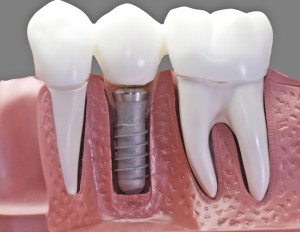Signs It’s Time To Replace Your Dentures
Dentures can be life-changing for those who have lost some or all of their natural teeth. A good quality denture can restore your ability to eat, speak, and smile with...

If you’ve begun to think about replacing missing teeth, chances are that you’re feeling a little overwhelmed. There are so many ways to restore your smile, and it can be tough to figure out which treatment option is the best. We’re hoping to counter that feeling of restoration stress with a basic guide to dental implants. If you’re unfamiliar with them, let this be your introduction to permanent tooth root replacement. While the emphasis of dental restoration is usually on the part of the tooth above the gum line, providing an excellent, strong foundation will make the replacement last and thrive.
Implants are screws made of titanium. Differently sized implants will replace missing tooth roots in distinct areas of your mouth. When you receive implants, they are placed in the jaw bone. There, the titanium bonds with your natural bone, resulting in an impressive connection between implant and jaw structure.
Because implants bond with your bone, they become a true part of your mouth. Once they have integrated with other structures, they provide impressive foundations for restorations.
A long-standing problem with dental restorations is that they require a certain amount of support to succeed. But where does this support come from? Most restorations draw on the strength of surrounding teeth. This may provide adequate stability, but can do so at the expense of weakening those teeth. The last thing patients (or our team) want is for a dental replacement to lead to another lost tooth.
Implants allow for independently-supported restorations. They won’t leech the stability or strength of other teeth, but will allow restorations to stand on their own. And implants could be right for your own missing teeth. In order to learn whether you’ll be able to receive implants, schedule a consultation with Dr. Baudean. We can’t wait to restore your smile’s fullness and integrity.